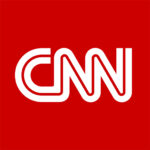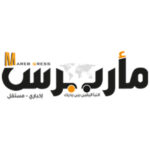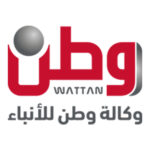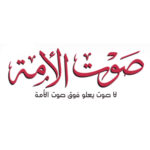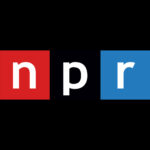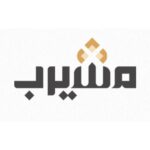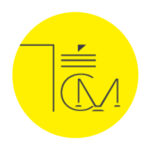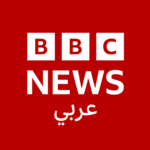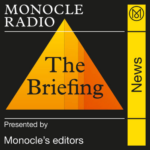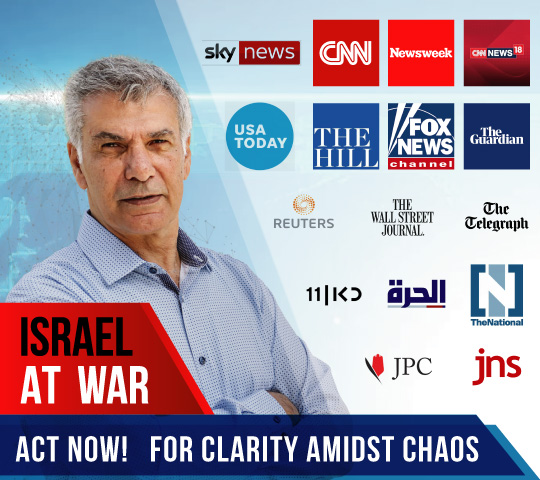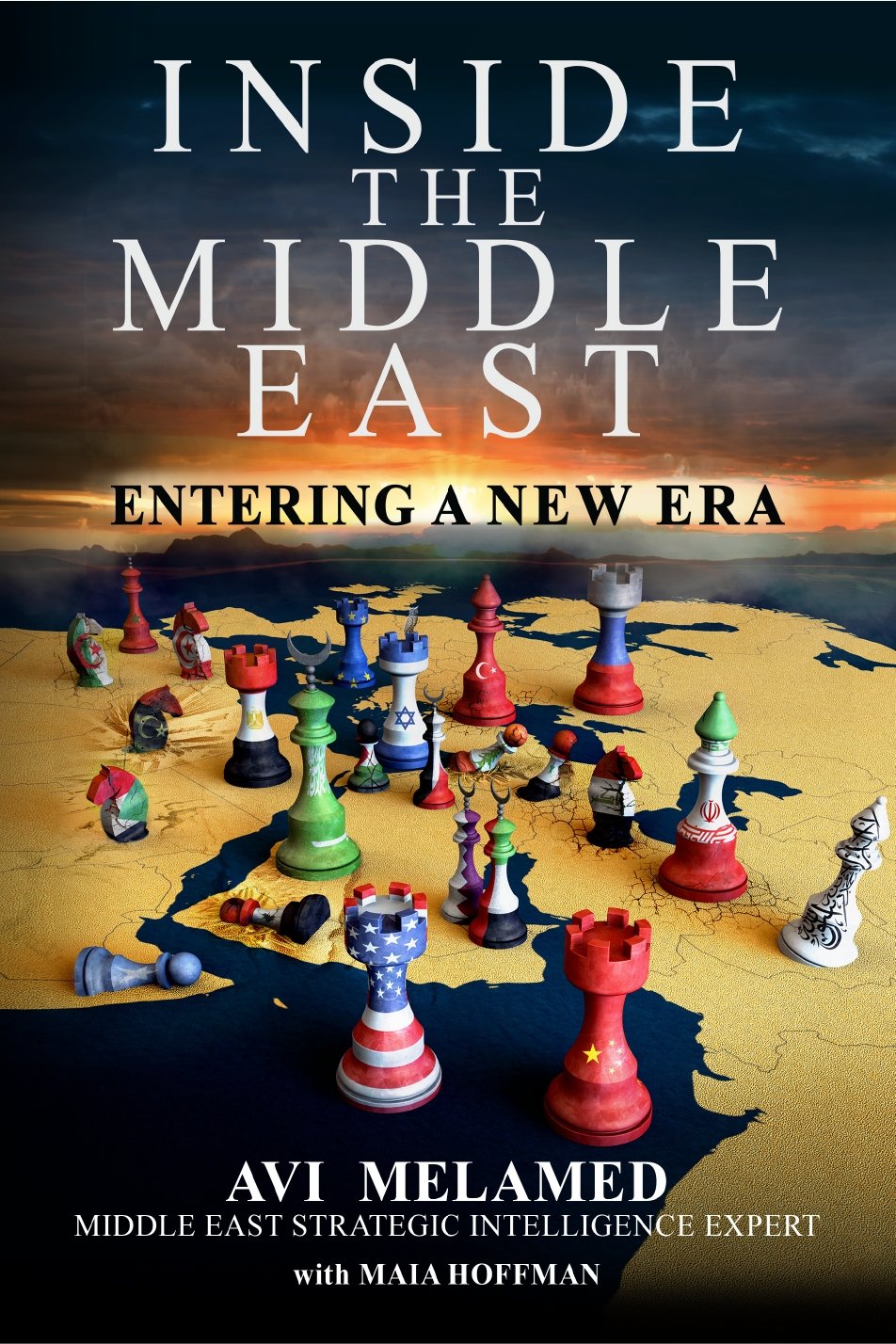|
Getting your Trinity Audio player ready...
|
Protests in Iran | The Mullah’s Regime Autumn | This Intelligence Report covers the ongoing protests in Iran | learn why it started, how it spread & the response of the Mullah regime.
Intelligence Report
Information:
Public protests which began in the city of Mashhad on December 28, 2017 ignited a wave of mass demonstrations in dozens of cities across Iran, including in major cities such as Isfahan and Tehran.
To date, according to sources associated with the Iranian opposition, forty-five people have been killed during the demonstrations and hundreds – perhaps thousands – have been arrested.
In response to the demonstrations, the Iranian Mullah regime deployed the anti-riot units of the Basij force (The Basij is an oppressive paramilitary police force in charge of public order, morality, etc. who subdued the 2009 protests) and attempted to completely block access to the internet and communication platforms.
The Iranian President, Hassan Rouhani, officially responded to the demonstrations by saying “people are entitled to protest yet it must be done within the frame of law.” Iran’s Supreme Leader, ‘Ali Khamenei, who was silent during the first days of the protests, described the protests as “meaningless” and calling the protesters “traitors.”
Major General Mohammad ‘Ali Jafari, the Commander of the Iranian Revolutionary Guards announced that the “civilian disobedience has been defeated.” Though as of now the protest wave indeed seems to be contained, that statement must be taken with a grain of salt, since the Mullah regime censors and blocks social media platforms, there is a very limited foreign media presence in Iran, and even the press that is there has limited access to information and does not have the ability to cover the events because it is restricted by the authorities.
Analysis:
2009 Protests and Current Protests – Similarities
The current burst of demonstrations is fueled by the same frustrations which ignited previous large-scale protests – including the ones that followed the elections in June 2009. People are suffocated by economic and societal challenges and are infuriated with government corruption and the suppression of individual rights.
The lifting of the sanctions on Iran, because of The Joint Comprehensive Plan of Action (the Iran nuclear deal), generated expectations among the public for a tangible improvement of the Iranian economy, which would positively impact Iranians everyday life. Those expectations were not met. Thus, the sentiments of disappointment and frustration deepened.
The slogans chanted by protesters, such as “Death to the Dictator” or “Down with the Regime” have also been expressed in previous demonstrations.
Like in the 2009 protests, people again chanted “We will die for Iran, not Lebanon or Gaza” expressing the discontent and resentment Iranians feel about the fact that the regime allocates significant resources, financial and other – to support its proxies in Lebanon, Syria, Iraq, Yemen, and the Gaza Strip in the service of the Mullah’s aggressive regional policy.
2009 Protests and Current Protests – Differences
The 2009 protests centered around the fact that the regime had falsified the results of the elections, claiming that the then President – Mahmoud Ahmadinejad had won the elections. The regime claimed that he had beaten the reformist camp led by Mehdi Karruobi and Mir Hossein Mosavi – both of whom have been under house arrest since 2009.The current protests are fueled first and foremost by economic stresses.
The volume of protests is smaller than 2009.
The 2009 protesters were primarily the middle-class and students. The current protesters are mostly the lower middle-class and the poor.
While in 2009, Tehran was the major stage for demonstrations, the current protests have spread to dozens of cities. Moreover, they began in the conservative and religious city of Mashhad – the home of the Mullah regime’s support base as well as the home of ‘Ali Khamenei – the Iranian Supreme Leader. Why, of all places, did the protests begin in Mashhad?
Mashhad is the second largest city in Iran and has a population of 3 million people. The economic and societal challenges facing Mashhad are particularly acute. Mashhad’s major income sources is tourism – and primarily Shi’ite pilgrimages from the Arab Gulf. The growing tension between Iran and the Arab Gulf Monarchies – particularly after the January 2016 burning of the Saudi Embassy in Tehran by an angry mob – significantly reduced the numbers of tourists visiting from the Gulf and Saudi Arabia. Not far from the Afghan border, Mashhad also has the largest population of Afghans in Iran. Lacking citizenship and deprived of social rights, Afghans in Iran became a low-cost labor source, at the expense of Iranians – and particularity in Mashhad. Over the past year 160,000 families living in Mashhad lost their money and savings following the bankruptcy of major banks in the city. The reason for that was a failed housing project named “Shandiz” that was run by senior officials in the Mullah regime. The combination of these factors result in growing stresses in the city – unemployment, staggering poverty, violence, the spread of narcotics – and accordingly, a growing number of drug addicts. Mashhad – to a large extent – is a microcosm of the challenges inside Iran.
A demonstration purportedly also took place in the city of Qom – a major center of Shi’ite theologians, and a significant stronghold of the Mullah regime.
The fact that the demonstrations took place in Mashhad and Qom reflects another significant difference between 2009 and now – the current protesters included some Shi’ite clerics.
The 2009 protests had a clear political agenda – they were protesting the fact that their votes, and the victory of the reformist camp, was completely disregarded by the Mullah regime. The current protests centers around the demand for an improved economy.
The 2009 protests had clear leaders – Karroubi and Mousavi. The current protests have no identifiable leaders. In that context, the major Iranian opposition to the Mullah’s regime based in France, called The National Council of Resistance (NCRI) – is lobbying for international support for the protests and for the ousting of the Mullah regime. However, it is not clear whether the NCRI has the ability to lead the protest inside Iran.
The 2009 protests did not receive the support of President Barrack Obama or the United States administration. The current protesters have received the clear support of the Trump administration.
The 2009 protests were violently crushed by the Mullah regime from day one. On the other hand, the response of the regime – as of now – to the current protests – can be described as relatively restrained. The Iranian President, Rouhani addressed the nation, acknowledged the people’s challenges, and legitimized the right to protest. The relatively mild response of the regime to the current protests probably stems from two primary reasons: the regime fears that a tough response will further fuel the protests and the regime evaluates the demonstrations will die out soon.
In 2009, according to the World Bank, only fourteen percent of Iranians had access to the internet; by 2016 over half the country had access to the world wide web. In 2009 there were 52,000,000 cell phone subscriptions; in 2016 the number of subscriptions exceeded 80,000,000. Moreover, in 2009 there were 1,000,000 smart phones in Iran; today reportedly there are 48,000,000. Twitter was a major player in the 2009 protests – but the technology and access has so significantly evolved since then that it is difficult for the regime to restrict access to the multitude of messaging apps. Social media platforms such as Instagram, Facebook Live, Whatsapp – and particularly Telegram – reportedly the most popular app in Iran, with an estimated 80 million users, did not exist in 2009. These apps are not only being used to communicate information outside of Iran – the encrypted technology of Telegram and other communication platforms is allowing users to communicate, organize and strategize over secure channels.
Like in the 2009 protests, people again chanted “We will die for Iran, not Lebanon or Gaza” – expressing the discontent and resentment Iranians feel about the fact that the regime allocates significant resources, financial and other – to support its proxies in Lebanon and Gaza Strip in the service of the Mullah’s aggressive regional policy. Though the refrains are similar, at the end of 2017 in the context of the Mullah regime’s regional policy and the public protests, there is a major difference from 2009 to 2017. The Mullah regime’s regional policy has substantially expanded, and the regime is massively involved militarily – both directly and by the use of agents and proxies – in three additional arenas – Syria, Iraq, and Yemen. That fact results in two major outcomes which further fuel the current protests. One, is the fact that the resources the Mullahs regime allocates to enhance and promote its aggressive regional policy are exponentially larger than 2009. Though no reliable figures are available – however, the resources spent likely amount to dozens of billions of dollars. The second outcome of the aggressive regional policy is the Iranian death toll sustained in these conflicts on behalf of the Mullah’s regime. Though, again, exact numbers aren’t clear – it is estimated that at least a few hundred Iranian Revolutionary Guard soldiers – including senior IRG officers, have been killed in the war in Syria as Iran attempts to keep Assad in power for their own hegemonic goals. In addition to the Revolutionary Guard casualties, according to a source evaluated as reliable, more than 2,000 Fatemiyoun militants have been killed in Syria through the beginning of 2018. The Fatemiyoun is a militia made up only of Afghans that the Iranian Mullah regime created to fight in the war in Syria to save the Assad regime. According to various official estimations there are between two and four million Afghans living in Iran – the majority of whom have no citizenship or legal status. The Mullah regime offers them citizenship and a monthly salary in return for them joining the Fatemiyoun unit in Syria. The large number of Afghans killed in Syria further fuels discontent among the Afghans in Iran as well.
Regional Players and the Protests
Turkey expresses decisive support for the Iranian Mullah’s regime. Turkey’s position may be attributed to the fact that Turkey’s President Erdogan fears that the continuation and expansion of protests in Iran will boost Turkish opposition to his brutal dictatorship. Another reason is Turkey’s involvement in the war in Syria; Turkey has some military presence on the ground in northwestern Syria – mostly providing support to different rebel groups. In fact, towards the end of 2017, Turkey reportedly established the National Syrian Army, a coalition of rebel groups fighting the Assad regime, who Erdogan assumes – in spite of Tehran’s wishes otherwise – will be moved aside soon. Erdogan’s motivation for placing troops in this area is the fact that he wants to establish a presence in northern Syria because he is determined to prevent the establishment of a Kurdish independent entity in northern Syria that could fuel separatist sentiments among Turkey’s 16,000,000 Kurds. Today Turkey, Russia and Iran are in talks discussing the future of Syria. In return for his support, Erdogan expects the Mullah regime to reciprocate by accepting a Turkish military presence in Syria in order for Erdogan to ensure that no Kurdish independent entity materializes.
Major Arab states such as Saudi Arabia, the UAE, Kuwait, Egypt, and Jordan clearly support the protesters. Most of these states choose to express their position indirectly through articles and analysis of senior columnists associated with the mainstream media in those states, who make it very clear that the Arab world hopes the protests will expand, and will result in the downfall of the regime. That position is not surprising, given the fact that Iran directly occupies parts of Syria, controls Lebanon through its most powerful proxy – Hezbollah, and is increasing its influence in Yemen, Iraq and Gaza. It is against that backdrop that it is important to remember President Rouhani’s statement in October 2017 that “Iran’s interest must be taken into consideration in Syria, Iraq, Lebanon, the Persian Gulf, and North Africa.” The Mullah regime’s intentions and goals are clear – and the Arab world – particularly the Arab Gulf Monarchies, threatened by the Mullah regime’s hegemonic goals, want to prevent their actualization.
Israel officially expressed support for the protests. The Israeli Prime Minister, Benjamim Netanyahu, addressed Iranian protesters directly expressing support and sympathy for their cause, and Israelis are reaching out over social media platforms, including the Israel-Loves-Iran Facebook page to express their support for the protestors. Israel’s position stems from the fact that the Mullah regime presents a real and serious threat to Israel. In addition to the fact that it vows to eliminate Israel, the regime massively arms and supports terror organization such as Hezbollah, Hamas, Islamic Jihad and others which have attacked Israel for more than three decades.
International Players and the Protests
The US has expressed its support of the Iranian people’s protests. The US position complies with President Trump’s tough policy towards Iran, viewing the Iranian Mullah’s regime as the major source of instability and a major threat regionally and globally. On December 31, 2017 the United States Ambassador to the United Nations, Nikki Haley said “In the New Year, our hopes and prayers are with the millions of people who are suffering from oppressive governments in North Korea, Venezuela, Cuba and especially in Iran, where the long-repressed Iranian people are now finding the voice. The Iranian government is being tested by its own citizens. We pray that freedom and human rights will carry the day.”
On January 5th, United States Ambassador to the United Nations, Nikki Haley, opened the emergency session of the UN Security Council which the US requested to discuss the protest in Iran by stating: The Iranian regime’s contempt of the rights of its people had been widely documented…The Iranian people understood that their lack of voice in their Government had allowed the regime to ignore them. The regime in Iran had spent $6 billion every year propping up the regime in Syria. The people of Iran were telling their Government to let go of Syria and think of them instead. The Iranian regime also gave funds to the Houthi rebels in Yemen. Meanwhile, the average Iranian family was 15 per cent poorer than it was 10 years ago. Every United Nations Member State was sovereign, but that could not be used as a shield when a State denied its people human rights and fundamental freedoms. The Iranian people were rising up and asking for something no legitimate Government could deny them. The Iranian regime was now on notice, and the world would be watching its actions. The five permanent members – China, France, Russian Federation, the United Kingdom, and the United States, and the ten non-permanent members – Bolivia, Kuwait, Peru, Sweden the Netherlands, Poland, Côte d’Ivoire, Equatorial Guinea, Ethiopia, Kazakhstan – and Iran – expressed the right of the people to protest and the need for Iran to respect human rights and the freedom of expression and encouraged dialogue. In January 2018. The United States imposed sanctions on fourteen Iranian companies, in addition to sanctions imposed on Iran’s Ayatollah Sadeq Amoli Larijani, Iran’s Judiciary Chief, for violating human rights.
The EU and UK positions, on the other hand, can be described as “puzzling.” The European Union released this statement on January 2: “The European Union is closely following the ongoing demonstrations in Iran, the increase of violence and the unacceptable loss of human lives. For the EU, human rights have always been a core issue in our relationship with Iran. Peaceful demonstration and freedom of expression are fundamental rights that apply to every country, and Iran is no exception. In the last days, we have been in touch with the Iranian authorities. In the spirit of frankness and respect that is at the basis of our relationship, we expect all concerned to refrain from violence and the right of expression to be guaranteed, also in light of the statements made by the Iranian Government. The European Union will continue to monitor the situation.” Referring to the “unacceptable loss of human lives,” the EU fails to differentiate between the perpetrators and the victims. The French and UK representatives expressed concern regarding the violation of human rights and demand Iran to respect the right of people to demonstrate. However, the French representative emphasized that “The (nuclear) agreement was one of the cornerstones of stability for the Middle East, and to lose that hard-won ground would be a major setback for the international community and the non-proliferation regime.” The UK representative emphasized that “Iran also had legitimate security interests in the region, and had suffered during the Iran-Iraq war. Too often, however, its security interests were pursued in a way that destabilized others. Those regional activities threatened international peace and security. That being said – the United States was the only member of the Security Council which saw the protests and the regime’s reaction as a concern of the Security Council, rather a purely domestic affair that did not pose a risk to international stability.
The understated nature of the reaction and the comments must be noted. The Mullah regime openly calls for the elimination of the state of Israel; most senior leaders of the Iranian regime openly brag that Iran controls four Arab state capitals – Beirut, Damascus, Baghdad and San’aa; dozens of thousands of Shi’ite militants, backed by the Mullah’s regime fight in Syria and Iraq; the Iranian regime massively arms and finances terror groups in the region – Hamas, Hezbollah, Islamic Jihad and more. One thus must wonder if sheltering the Mullah regime is a recipe for stability. (I have written many articles on the Mullah regime’s destructive role, read for example my September 2017 article “My Enemy is My Best Asset”).
Russia’s position regarding the protests is interesting. Russia argues that the US support for the protesters might result in ‘undesirable instability in Iran. One should note that Russia’s position is mostly focused on countering the US position – not necessarily expressing decisive support for the Mullah regime. That is Putin’s sophisticated way of signaling to the Mullah’s regime that Russia’s position vis a vis the protests could change if Iran does not get closer to Russia’s vision regarding the future of Syria. Though cooperating in the war in Syria, Russia and Iran have differing – and a more and more conflicting – vision vis a vis the political solution to end the war in Syria. Russia accepts the concept that Syria’s future – including Assad’s future, will be determined by the Syrian people and only by the Syrian people – through elections. That path will inevitably result in a new political structure in Syria which will reflect the basic demographic fact that eighty-five percent of Syrians are Sunni – and they will neither accept Iran continuing to occupy their country – neither through direct presence, nor through indirect control via an Iranian proxy or puppet like Assad. Putin has no special commitment to Assad. Putin has two major interests in Syria – not to drown in the Syrian blood bath and to make sure that the stronghold he has today in Syria will remain. Achieving those goals is not necessarily conditional on the endurance of Assad’s rule – as far as Putin is concerned Assad is dispensable. And Iran is not happy with that.
Evaluation:
It seems as of now that the protests are dying out.
Though the Mullah regime markets a triumph, one should not be misled – the current protests are significant – and a very disturbing signal to the Mullahs regime because of the following facts:
- The protests spread very quickly
- The protesters represented wide sectors of society
- Many of the protesters represented the more conservative and religious political base of support
- Some of the protests took place in the traditional strongholds of the regime – Mashhad, Qom, etc.
- The protests are fueled by real and deep economic stresses
- Protesters attacked power symbols of the Mullah’s regime – including using fire arms and in some cases killing Iranian police officers
- The protesters set fire to schools that teach and training academies which train and certify Shi’ite clergy
None of these facts, nor their significance, are lost on the Mullah regime, and all those aspect are flashing red lights – the regime understands that and knows it must address the challenges.
The protests which began towards the end of 2017 and continue, albeit right now, on an apparent small-scale, have yet another potential to make a substantial and deep impact both domestically as well as regionally.
Potential Domestic Impact
First, attacking the regime’s symbols of power indicates that the wall of fear is cracking. For the majority of Iranians, the stresses are so deep and painful they feel they have nothing left to lose. Like any other dictatorship, the Mullah regime uses fear and terror to oppress and suppress criticism and unrest. The protests indicate that the barrier of fear has been breached. That is what happened in Syria in 2011, and was a turning point resulting in the uprising of vast sectors in Syria, generating a bloody war and causing the disintegration of Syria. (On that matter see my March 2011 article “Syria: The Wall of Fear is Cracking.”).
Second, it possible that the stresses – and the resulting protests, will give birth to the emergence of a new political leadership that could be a substantial player in shaping Iranian politics and the future of Iran. In that context, it should also be noted that one of the protesters slogans is “Conservatives or Reformists – you are all done and over with.” This signals the lack of confidence in the current regime, as well as those who are dedicated to reform – and may foreshadow the emergence of another grassroots movement.
Potential Regional Impact
The protests have the potential to significantly impact Iran’s regional policy. I have written extensively on the eight arenas of the Iranian-Arab power struggle – Lebanon, Syria, Iraq, three Islands in the Gulf near the Strait of Hormuz, Bahrain, Yemen, the Gaza Strip and the Iranian Nuclear project. The protests come at a bad time for the Mullah regime, as it faces growing difficulties in practically all the major regional arenas in which it is involved and particularly Lebanon, Syria, Iraq, Yemen and the Gaza Strip.
The United States and Russia agree that a political arrangement is needed to bring the war in Syria to an end. They also – for the most part – agree on the framework for such an arrangement: free elections, a new constitution, a peaceful process of the transition of power; and the evacuation of foreign militias from Syria. The full – or even partial, implementation of these guidelines means that the money and resources Iran invested in Syria for decades to prop up Assad as a means to Iran realizing its hegemonic goals was a waste. Moreover, Iran it would lose its foothold in Syria – the lynchpin of its regional infrastructure of proxies and agents which it controls as a means to advance its regional and global superpower ambitions.
In Yemen, like in Syria – the majority of Yemenites are Sunnis. About thirty-five percent ate Shi’ites – most of them Houthis. Therefore. a political arrangement to end the war in Yemen would likely reflect the demographic balance of the country. The disintegration of the Iranian backed Houthi-Saleh coalition in December 2017 and the military achievements of the Saudi-led military coalition attacks against the Iranian backed Houthi militia, have weakened the Houthis. Considering these developments, the Houthis may now be motivated to agree to a political compromise before they are further weakened. Yemen is located at one of the most strategic and sensitive points in the world. The Bab el-Mandeb Strait is the chokepoint between the Horn of Africa and the Middle East and the link of the Mediterranean Sea and the Indian Ocean. Whoever controls this area wields enormous power over trade, commerce, the flow of oil, etc. It is one of Iran’s strategic goals to control this area. Iran saw in the Houthis an agent not only valuable to the Mullah regime in advancing its goal to counter the Saudis, but also a good investment in its hegemonic goals. Losing a foothold in Yemen would mean losing an invaluable strategic base.
In Iraq, accumulating reports indicate that Iran is increasingly operating undisturbed in southern Iraq as if it were its own territory. Reportedly Iranian police are present in southern Iraq; the border crossing between Iran and Iraq is controlled on both sides of the border by Iran; Iran has paved a fifteen-mile road from inside Iran into the Iraqi eastern district of Diyala which borders Iran, the road is reportedly used exclusively for convoys to transfer Iranian weapons, ammunition, and militants into Iraq; Iran is selling oil that it extracts from Iraq – and the list goes on. However, major Shi’ite leaders – including Prime Minister Haider al-‘Abadi and Ayatollah ‘Uzma (the grand Ayatollah – the highest Shiite cleric position) ‘Ali al -Sistani and Muqtada al-Sadr, leader of the Sadrist Movement – openly reject Iran’s influence in Iraq. The growing chorus of voices expressing concern vis a vis Iran’s growing and emboldened influence and presence in Iraq, are growing stronger as Iraq approaches general elections, currently scheduled for May 2018. In that context, in January 2018 Iraqi Prime Minister Haider Al’Abadi established a political coalition with Hadi Al Amiri, the leader of the Iranian backed Iraqi Shi’ite Badr organization, which has a paramilitary force estimated at 12,000 strong. Some analysts argue that that move strengthens Iran’s position in Iraq. However, the fact that Al’Abadi rejects Iran’s growing influence in Iraq may indicate that his move actually weakens Iran’s position in Iraq. By partnering with Al-Amiri, Al-‘Abadi applies the godfather philosophy – keep your friends close and your enemies closer. Furthermore, the fact that Iraq has officially announced that ISIS has been defeated, takes away the Iranian excuse for its direct military presence in Iraq which was “to fight the war on terror against ISIS.” A weakened foothold in Iraq would, among other things, compromise the Iranian corridor the Mullah regime wants to continue to fortify from Iran to the Mediterranean.
In Lebanon, Iran’s major and most important proxy – Hezbollah, continues to struggle with ever-growing challenges. Hezbollah is facing increasing financial challenges stemming from Iran’s diminished monetary support due to increasing demands on Iran’s resources, compounded by economic sanctions imposed on Hezbollah by the US and major Arab Gulf states. The Lebanese are continuing to grow increasingly angry at Hezbollah for dragging them into the war in Syria – brazenly defying the Lebanese government (of which Hezbollah is part) – in the service of Iran. The Lebanese Shi’ite community – Hezbollah’s natural support base – are getting more and more angry at the growing death toll of Shi’ite Lebanese in the service of Iran to save the Assad regime. So far about 2,000 Hezbollah militants have been killed in the war and many thousands have been wounded. And all segments of Lebanese society are angry at Hezbollah and Iran for the chaos they have caused in Syria and for dragging Lebanon into the Syrian mud, resulting in the presence of 2,000,000 Syrian refugees which is a major burden on the crumbling Lebanese economy. Finally, the US President made it very clear that Hezbollah is a dangerous terror organization threatening Lebanon and the region, and committed that the US will protect Lebanon’s sovereignty. Those developments limit Hezbollah’s maneuvering capacities inside Lebanon. A deterred Hezbollah compromises Iran’s ability to wield its power.
In the Gaza Strip the repeated and escalating military rounds since 2007 between Israel and the major armed Palestinian military organizations in the Gaza Strip – Hamas and the Islamic Jihad in Palestine (IJIP) – both massively armed and financed by Iran, served the Mullah regime very well. As far as the regime was concerned this was money well spent because they got to turn the heat up on Israel at will. However, some developments have diminished Hamas’ willingness and ability to continue to initiate military rounds. The main goal of the reconciliation agreement signed in October 2017 between Hamas and the Palestinian Authority, which was brokered by Egypt – is to rehabilitate the Gaza Strip. If Hamas initiates a new military round with Israel, that will label Hamas as responsible for the collapse of the agreement, the results of which will further increase the dire reality of the people of Gaza. Egypt will retaliate against Hamas by restricting the movement of Hamas leaders, blocking the transfers of commodities from Egypt into Gaza, limiting entry for Gazans into Egypt through the Rafah Border Crossing, etc. The people of Gaza already blame Hamas for their economic distress and for the societal stresses they endure. Anything Hamas does to increase – as opposed to alleviate that stress – will fuel the already-present public anger and discontent towards Hamas; an and anger which they can voice in many ways – including in any upcoming election (which is currently not scheduled). Hamas leaders publicly praise Iran and thank them for their good relations in the hope that further support will come from Iran – without Hamas having to launch a military attack on Israel. Yet, without a return on its investment in the shape of reigniting attacks on Israel from the Gaza Strip and, tuned to the chants of Iranians who want money spent at home and not on the arsenals of Gaza at their expense, the Mullah regime will need to review its investments in the Gaza Strip.
So, at the beginning of 2018 the Iranian Mullah’s regime is facing a major dilemma. Will it continue to exhaust its resources nurturing, financing and supporting regional agents and proxies to do their bidding in pursuit of regional domination and towards the creation of a crescent shaped Shi’ite Persian Empire stretching throughout the Middle East – and particularly its vision of land corridor of influence stretching from Iran through Iraq; Syria and Lebanon, or will it change course, and allocate those resources to addressing the challenges at home and thus abandon its mission?
The majority of Iranians don’t share that dilemma. They don’t share the Mullah regime’s mission. They want the regime to allocate resources at home to improve their lives and their future.
Prediction
It is important to note three specific upcoming events which may significantly impact the course of developments in Iran.
One is the Donald Trump’s tough policy on Iran. In his statement on January 12th, the US President announced: “Today, I am waiving the application of certain nuclear sanctions, but only in order to secure our European allies’ agreement to fix the terrible flaws of the Iran nuclear deal. This is a last chance. In the absence of such an agreement, the United States will not again waive sanctions in order to stay in the Iran nuclear deal.”
The other is the fact that Iran’s 2018 budget is expected to go into effect on March 21, 2018. The suggested budget includes cutting of subsidies for basic commodities – eggs, rice, flour, sugar, milk, etc. and increasing the price of gasoline and other oil products. Those two articles in the proposed budget were what sparked the protests. Not surprisingly, following the protests, it has been reported that the Budget Committee of the Iranian Parliament has retracted the raising of gasoline prices. This is an indication that the Mullah regime is taking the protests seriously.
The third development to watch closely is the health of the Supreme Leader, Ali Khamenei. He is very sick. It is very possible that he will bring his term to an end in 2018. This will very likely result in a leadership crisis and a bitter power-struggle within the major circles of power in Iran. This power struggle would be among – and between – the hard liners and the pragmatic camps within the Mullah regime, the Revolutionary Guards, and the army.
Middle East analysts struggle to define the protests in Iran. Some see it as a “sporadic uprising” others call it “a national revolution” some define it as “limited unrest” and others even entitle it as “The Iranian Spring”.
Lebanese Shi’ite journalist, political analyst, and political satirist, Nadim Koteich described the current protests as “The Mullah’s Regime Autumn.” I agree with him.
The “autumn” of the regime does not threaten its existence. However, failing to profoundly and quickly address the challenges at home may cause a “Mullah Regime’s Winter” in the shape of a massive eruption of an uprising in Iran which will jeopardize the endurance of the regime.
At the beginning of 2018 Iran approaches – quickly – a critical junction.
To Download a PDF of this Report Please Click Here
If you want to have a better understanding of the news and what really drives the unfolding events…
Read the latest book of Avi Melamed,
INSIDE THE MIDDLE EAST | ENTERING A NEW ERA, available now >>>
Follow me on Twitter @AviMelamed; Facebook @InsideTheMiddleEast; for more Videos on YouTube https://www.youtube.com/c/AviMelamed
I can always be reached at Av*@********ed.com



